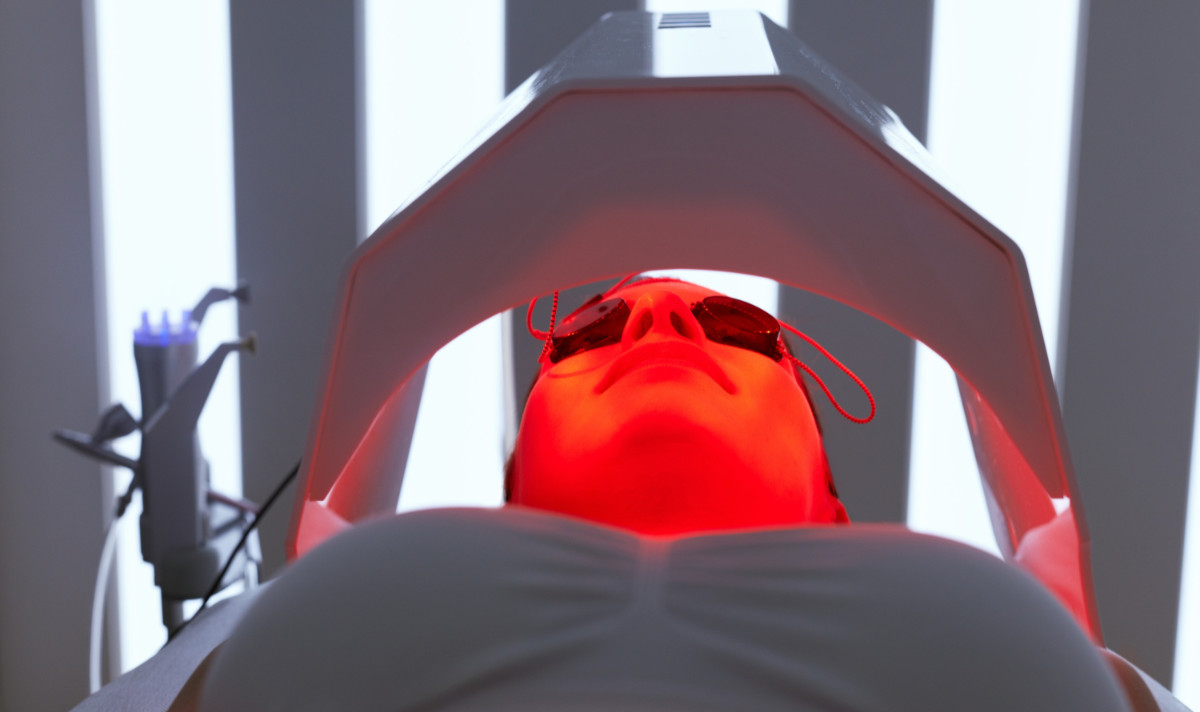A new year brings a whole wave of new wellness trends with it, and one thing getting a fair amount of buzz already in 2020 is red light therapy.
It ticks all the boxes of looking cool on Instagram and claiming to have a varied range of health benefits. The question is: what is red light therapy (RLT), and does it have much of an effect on your body?
We spoke to Dr Diana Gall of Doctor4U to find out more…
What is red light therapy?
Gall describes red light therapy as “a method some people use to treat certain conditions (particularly ones related to the skin) by exposing the body to low wavelength red light.” It’s certainly a striking-looking treatment, as bright red light emanates from a machine and washes over your body.
RLT devices can come in different forms, whether it’s more targeted masks for treating the face, “or larger devices that cover virtually the whole body”, says Gall.
Where can you find RLT treatment?
RLT isn’t exactly something you can get on the NHS, says Gall, “because it’s not a medicine in the traditional sense. RLT rooms or lamps can be found in a wide range of businesses, including gyms, day spas, tanning salons, wellness centres and dermatology offices.”
As the trend becomes increasingly popular, Gall adds, “some people may also opt to purchase relevant equipment in order to conduct red light therapy at home.”
How does red light therapy work?
View this post on Instagram
“The idea behind red light therapy is to expose the body to natural red light, which can penetrate deep into the skin and allow cells to absorb and use it,” explains Gall. “Studies have found that mitochondria in the skin cells can absorb these light particles, which can then be used to let the cells produce more adenosine triphosphate (ATP), which is the source of energy for [living] cells.” If cells produce more ATP, they can work more efficiently and repair damage more easily.
Because of this “potentially positive biochemical effect”, says Gall, RLT has been seized upon to treat a huge range of conditions. “Improving skin health and appearance is the most common reason people use RLT,” she says, which explains why face masks with bright red lights have become so popular in beauty salons. Celebrities have been loving the trend, with people like Camila Mendes and Bella Hadid posting their RLT skincare treatments on Instagram. It’s also been linked to treating other conditions, with Gall listing “inflammation, pain, autoimmune diseases, acne, alopecia, arthritis and even Alzheimer’s disease”.
Gall notes: “While there are some studies which do indicate that RLT can help with skin health and certain other conditions, the number of such studies is limited. More extensive clinical studies are required to more accurately determine the true and consistent capabilities of red light therapy.”
With this in mind, she thinks RLT is most likely to be helpful for “people seeking small changes in their skin or aiming to keep skin health and reduce inflammation. If used, however, it should be viewed as just one part of a complete skin care routine”.
Are there any risks?
“Red light therapy is generally considered a low-risk method of treatment, but too much exposure to the light, or a practitioner with little experience, could cause tissue and cell damage,” explains Gall. “Such side effects are more likely when RLT products for the home are misused.”
Gall recommends talking to a doctor before undergoing these kinds of treatments.































































